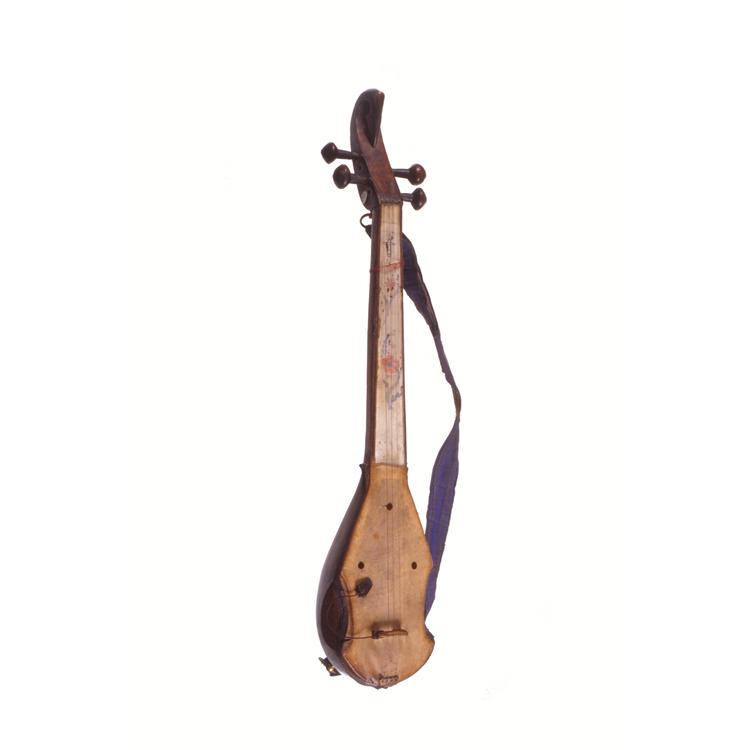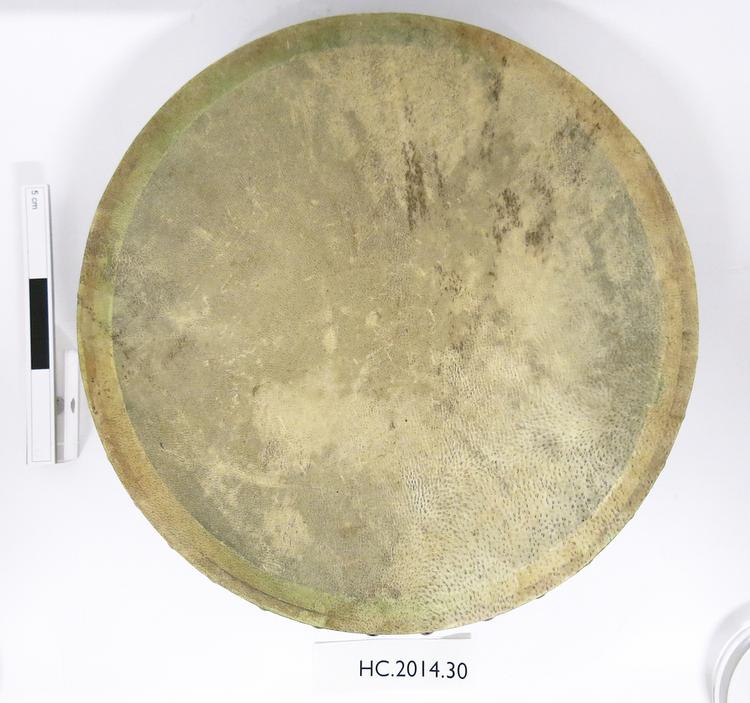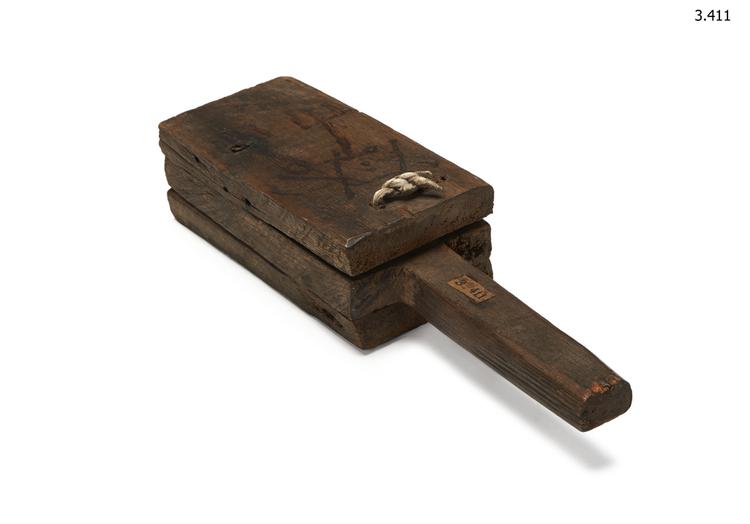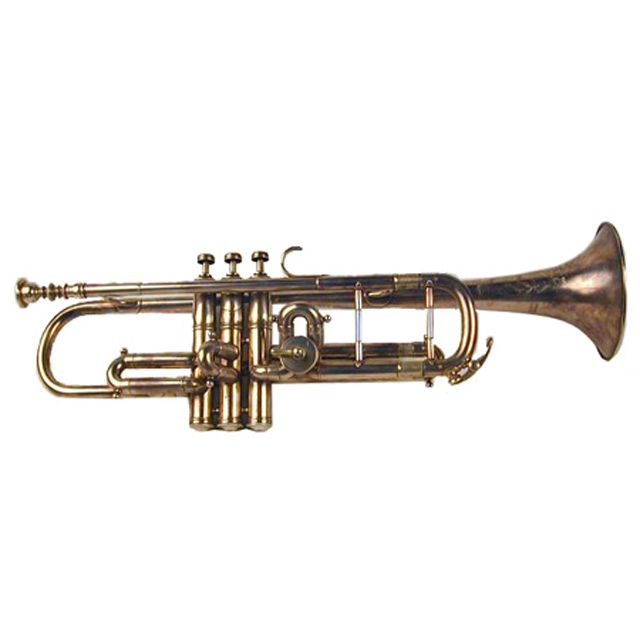
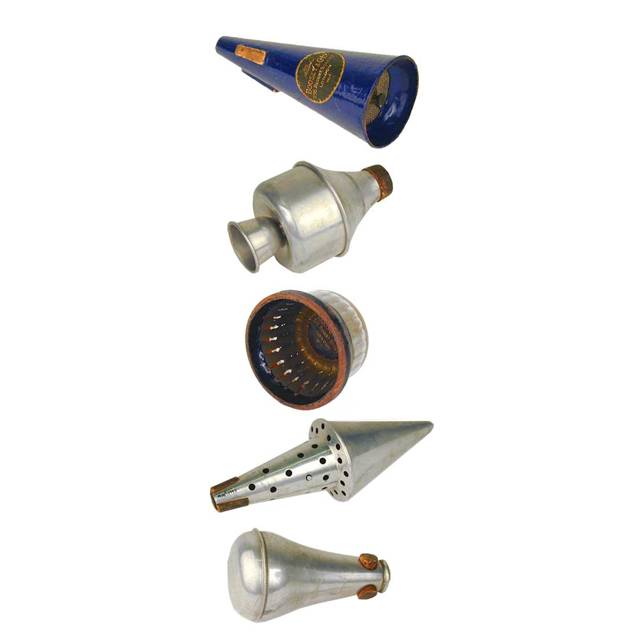
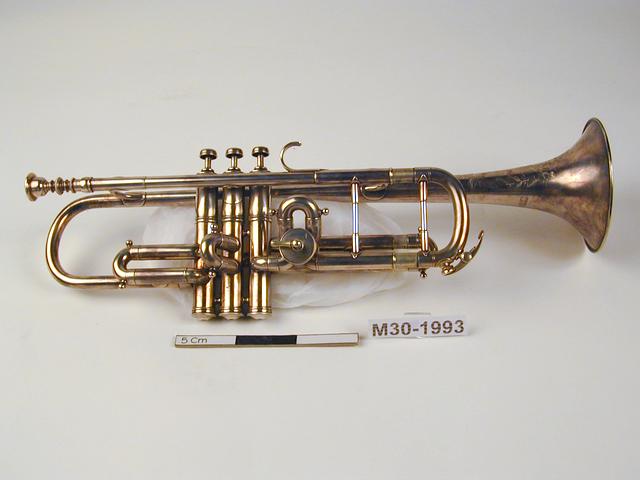
Trumpet in B-flat. Clippertone model, three Périnet valves and rotary stop (without return springs) for quick change to A. Each valve loop has two button grips positioned in line with the tuning slide. Bell inscription (which is surrounded by floral decoration) reads: Excelsior sonorous class A/ 49670. Original mouthpiece, stamped: Hawkes & Son. With original fitted case and five mutes.
The Clippertone model was designed primarily for jazz and session musicians. The narrow bore gave it a clear, penetrating tone that was ideal for jazz ensembles and big bands. Its 'quick change' mechanism (the rotor stop to the right of the three main valves on the photograph) also made it popular with theatre musicians. In the late 19th and early 20th centuries, players were often expected to alternate between B-flat and A trumpets. The quick change system meant that the music for both types of trumpet could be played on the same instrument, making it useful in cramped orchestra pits. The disadvantage of the quick-change system was that the loops for the main valves were designed for a B-flat instrument and played sharp when used in conjunction with the rotor stop. However, many players considered the Clippertone to have fewer intonation problems than other quick-change trumpets. The model was a commercial success, and production continued well into the Boosey & Hawkes era.




